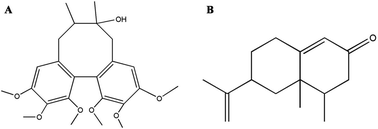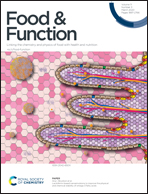Synergistic neuroprotective effect of schisandrin and nootkatone on regulating inflammation, apoptosis and autophagy via the PI3K/AKT pathway†
Abstract
Alzheimer's disease (AD) is a neurodegenerative disease that seriously threatens elderly health. Schisandrin (SCH) and nootkatone (NKT) are two core components derived from Alpinia oxyphylla–Schisandra chinensis herb pair (ASHP), a traditional Chinese medicine formulation. Previous studies demonstrated that the combination of NKT and SCH exerted a neuroprotective effect in AD mouse models. The present study was undertaken to investigate whether there was a synergistic effect between NKT and SCH and the possible mechanism in Aβ1–42 induced PC12 cells. SCH (50 μM) and NKT (10 μM) had the most notable inhibitory effect on the level of Aβ secreted by cells. Treatment with NKT + SCH activated the PI3K/AKT/Gsk-3β/mTOR pathway. Inflammation related proteins such as NF-κB, IKK, IL-1β, IL-6 and TNF-α were decreased. The levels of cleaved-Caspase3 and LC3-II were reduced, indicating that apoptosis and autophagy were inhibited. These results revealed that NKT + SCH exerted a neuroprotective effect via the PI3K/AKT pathway, inhibiting inflammation, apoptosis and autophagy.



 Please wait while we load your content...
Please wait while we load your content...